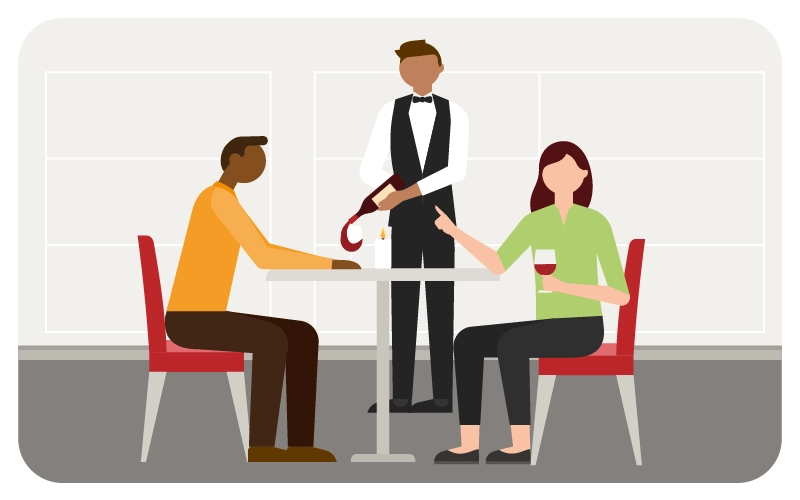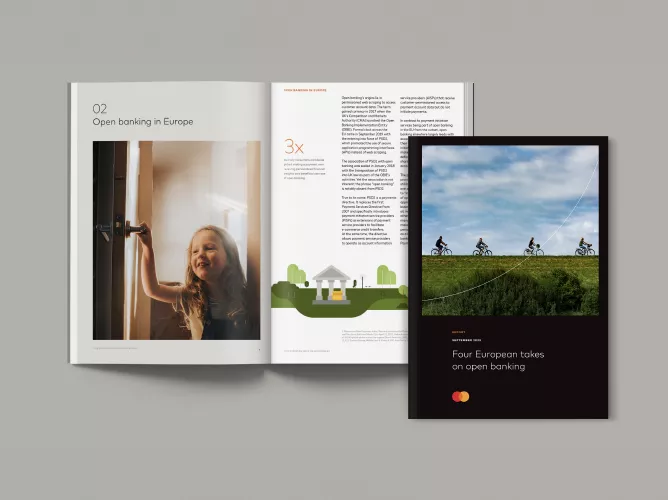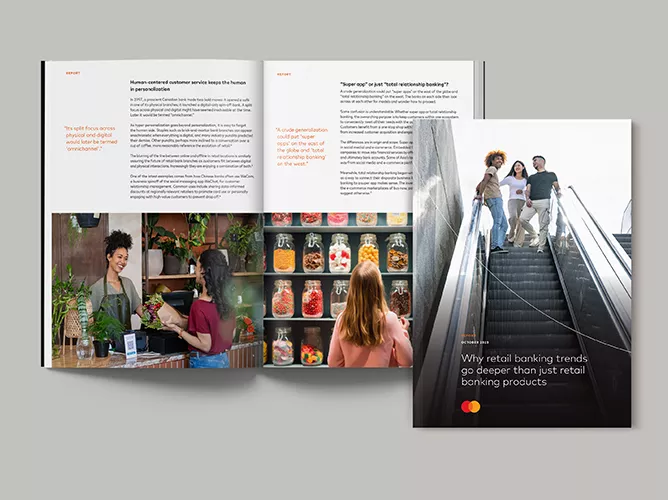By: Heidi Boucher and James Hallock
Published: October 18, 2024 | Updated: October 18, 2024
Read time: 15 minutes
Traditional, free loyalty programs are table stakes for many brands. But the emergence of paid loyalty, in which customers pay to access a benefit or to get more services on top of the free offering, has many brands asking if paid loyalty might be right for them.
Paid loyalty brings the potential for ongoing, recurring revenue and an opportunity to engage and gain ongoing business from consumers who are willing to spend money to access more benefits. Successful programs represent a meaningful exchange of value that meets core customer needs like choice, control and convenience with solutions that delight a brand’s best customers. The best-in-class programs demonstrate their value with a clear return for the customer’s investment and adapt as trends and tastes shift.
- In this report, you can learn

What is paid loyalty?
While customers can get benefits from a brand’s free, traditional loyalty program, paid loyalty requires that customers pay to access program benefits.
Paid loyalty programs vary widely. Examples include:
- A quick-service restaurant (QSR) offers an unlimited beverage subscription.
- An office supply company provides unlimited same-day delivery for a monthly fee.
- A warehouse club requires that require a paid membership to shop or entertainment streaming services for music and movies.
Whatever the form, because customers are investing in a paid loyalty program, it can help build deeper relationships and greater loyalty for customers who want more and are willing to pay.
- Considering a co-brand
How might a brand consider how a co-brand card fits into the loyalty ecosystem with a paid program element? While a co-brand card does not have to be a paid program, it is a commitment from the brand’s highest-value customers. Through co-brand programs, cardholders gain access to additional benefits or services from card use. While a co-brand program might be a “free” card, it can also focus on card fees to give premium benefits. The smartest brand strategies will accentuate the value for those customers through recognizing their commitment and demonstrated brand loyalty. In some cases, this could look like automatic access to benefits of the paid program for cardholders.
Understanding consumer sentiment and spending
Some consumers may be assessing their budgets with an eye to letting go of subscriptions they’re not using as much as they once did or as much as they thought they would when they first signed up. As a result, some categories of paid loyalty are facing competition for share of wallet.
Some categories of paid loyalty are facing competition for share of wallet
Different categories of subscriptions will fare better or worse depending on customers’ priorities. In the entertainment category, as customers reach budget limitations, they will trade within categories by dropping one streaming service but picking up another. In the food category, there’s less saturation and therefore more possibility for people to sign up for a QSR’s beverage subscription or even a grocery store’s unlimited delivery service.
Consumers investing in paid loyalty want to get their money’s worth and brands must expect them to “do the math” when deciding whether to sign up. It’s essential that customers easily understand what their money will deliver and how they’ll get that value back. Ideally, there’s an exchange of value where both the brand and customers are equally benefiting from the relationship.
Brands must continue delivering value through their paid loyalty programs to avoid attrition. Common reasons customers pull the plug include:
- saving money as they reassess budgets
- deciding the value proposition is not worthwhile
- switching to a new program from a competitor that offers a better value proposition
- a change in lifestyle or needs as customers move into a new phase of life
- waste of products and packaging
With today’s empowered consumer making choices to balance prices and priorities, brands must think about how to best meet customers where they are.
How can brands approach paid loyalty?
Many brands are asking questions about the types of paid loyalty and which one makes sense for them. There’s no one-size-fits-all answer. What is your market? Who is your customer? What existing loyalty program constructs do you have in place?
Some of the levers and components that brands can add to a paid loyalty value proposition include:
- Broadened range of benefits and experiences
- Creating opportunities to build community and connection
- Link to bigger brand values
The lure of creating potential revenue streams and building more loyal customers may be strong, but in an environment where consumers are considering which paid loyalty programs add most to their lives, there will be strong competition for wallet share. Getting it right requires an understanding of specific strategies and models, or archetypes. Let’s take a closer look at the four different archetypes of paid loyalty.
Paid extension of loyalty
For customers who want more benefits and are willing to pay for them, a paid extension of loyalty program builds on to a brand’s free program, often in a tiered structure. These programs offer benefits such as discount promotions, free shipping, free gifts, early and expedited access to new products or special events, access to round-the-clock services, upgrades to better rewards or special offers on the member’s birthday. For example, a low-cost European airline offers a subscription service that offers a dedicated bag drop, faster boarding, allocated seating and fast track security. Another airline, this one based in the Middle East, offers a tiered subscription service with increasing benefits, including bonus miles, airport lounge access and checked-in baggage allowances.
Standalone subscription
Standalone subscriptions are paid programs that operate separately from the free loyalty program. For example, an athletic apparel company offers a paid subscription which provides access to thousands of fitness classes and videos. In another example, a large retailer might offer a subscription renewal service of beauty products for customers who sign up for its beauty subscription. In the U.K., a popular sandwich shop chain club offers members up to five barista-made drinks a day and 10% off food for 30 GBP a month. In these examples, brands choose to operate a distinct paid program from their free loyalty programs.
Fee-required loyalty
With this fee-required loyalty archetype, the brand does not have a free loyalty program, but non-members can shop there. For example, an online marketplace might sell to all, but there’s an annual fee to get perks of membership such as free delivery. Or, a co-op requires a one-time fee to buy a lifetime membership. Members receive benefits like members-only pricing and 10% back on purchases annually.
Members-only loyalty
In the members-only archetype, the customer must pay to access the brand’s offerings. Without a membership, the customer cannot participate or shop. Warehouse clubs are examples of members-only loyalty, in which the brands are only open to members and there are varying tiers of paid membership.
These forms of paid loyalty are well suited to highly fragmented, competitive verticals with multiple brands and products that can be difficult to differentiate. Members-only and fee-required models enable brands to differentiate by giving customers a better price (thanks to selling in bulk) and requiring customers to pay for memberships to shop, such as warehouse stores. Consumables, everyday retail, entertainment and fitness are well suited to members-only and fee-required loyalty. Brands can deliver bundled offerings to strengthen the brand value proposition and to create differentiation through brand exclusivity, support or pricing.
Because members-only and fee-required loyalty require customers to pay to access anything, this archetype is suited to your brand’s regular products and services, as well as any services or partnerships outside of your core offering that can be considered add-on’s.
These archetypes are added on top of a brand’s free loyalty program, making them ideal for a brand’s high-value, high-touch customer segments. These programs are not designed for every customer who shops that brand, but for certain segments that have additional needs and for which the brand can provide additional benefits for an additional cost. The revenues generated will be used to offset or cover the program costs. In the UK and UAE, subscription food delivery services offer members lower delivery fees that encourage greater ordering frequency. A European furniture retailer offers members a premium service that includes furniture assembly and installation.
For the paid extension of loyalty and standalone subscription models to succeed, a brand needs a strong segment of highly engaged customers that have additional needs or wants and are willing to pay for them. The goal is to determine what the additional benefits of a paid program might deliver in terms of incremental engagement and revenue. Because of the cost of goods or labor, the brand wouldn’t be able to make this offer to all loyalty members, but they can offer it to these specific segments in exchange for the fee. Brands will want to model this to validate the business case.
For the paid extension of loyalty and standalone subscription models to succeed, a brand needs a strong segment of customers that have additional needs or wants and are willing to pay for them
Restaurants, specialty retail and travel and hospitality are well suited to paid extension of loyalty and standalone subscription models because customers tend to use them less frequently than brands in entertainment or fitness, where people might be accessing them multiple times a day.
QSRs experience high demand for off-premises access, so they might offer unlimited delivery bundled with a subscription offering. A specialty retailer in beauty might offer a subscription service that offers savings on regularly purchased products. In the Middle East, ride-hailing apps offer subscriptions that allow riders to access better quality vehicles and get priority during busy travel times.
How to be successful with paid loyalty programs
Paid loyalty must deliver compelling value to appeal to a brand’s best customers and be seamlessly executed to validate the price with a winning experience. To succeed, brands need to offer a clear value exchange and deliver incrementality while protecting core sales. At its core, the program should keep the brand’s hero product or use front and center without devaluing it; instead, the most successful programs will create more member value for continued purchasing and engagement with the brand’s signature offering. In the example of a coffee shop, the program should drive more routine coffee purchases by offering bonus bakery items or early flavor access, leading to higher visiting and total spend.
Maximizing a program’s value
What do paid loyalty programs need to offer to get customers to engage – and to create both staying power and renewal power? A no-brainer value proposition should include:
1. Value
A large drugstore chain offers a paid loyalty program in which customers pay $5 a month and in return receive a $10 monthly reward, discounts, free delivery and access to a pharmacist 24/7.
2. Flexibility
An online personal styling service offers customers the option to skip their monthly subscription box, swap out certain items or change the timeframe for delivery so customers who can’t make their return in the usual timeframe aren’t charged for items.
3. Personalization
A video streaming service recommends more content at no extra charge after the customer has watched a couple of shows, encouraging more use of the subscription.
4. Access
A warehouse club offers essentials, but also offers tires and tire rotation, fuel and pharmacy.
5. Community
An outdoor retailer might offer members classes, campouts, hikes and other adventurous experiences with members-only pricing. Members then post online about their experiences to offer tips and itineraries and connect about their shared interest.
Executing a paid loyalty program
You’ve kept your value proposition front and center as you created the strategy behind your paid program. Next, you must develop a complete execution and learning plan to optimize and evolve as the program grows. How can you ensure that as you bring your program to life it has all the right ingredients to make a great customer experience? And once it’s launched, how can you use data and insights to optimize and evolve the program?
Building a solid execution plan
Perhaps the most challenging part of a paid loyalty program is executing a friction-free experience. What’s the best approach for rolling out a new paid loyalty program? This three-step structure follows the guidance to begin small and build up over time.
1. Test
The safest way to balance risk and caution is to test in a limited capacity, like an individual market for a defined period. This enables a controlled way to measure efforts, evaluate and adjust.
2. Ramp
Once validated in market, there’s opportunity to increase market presence and expand slowly and with minimal or no marketing support for the time being. Focus on operational elements, like documentation and staff training, to build program awareness from the inside-out.
3. Scale
Launching the program at scale is exciting and must be a key focus across the organization. All teams must be equipped with relevant information about the program, supported by a dedicated marketing plan, enabling technology and ongoing training and communications. Over time, programs can continue to build onto their programs to increase the value exchange and generate more revenue.
An online retailer began by offering unlimited delivery for an annual price point and built up the program with more add-on benefits over several years. Additional services and benefits led to an evolved tier-pricing structure, where members pay more to unlock greater benefits.
Executing with integrated technology
The linchpin of a successful program is technology that’s integrated and makes for a seamless execution. When the technology is seamless, the outcome is a cohesive customer experience.
Wondering what to consider when it comes to integrating technology? Here are five essential factors:
1. Loyalty ecosystem connectivity
Every communication a customer gets from your brand and your loyalty ecosystem is part of a holistic experience. Your paid loyalty program should be connected to your free offering -- while making sure your brand acknowledges and educates customers on the important distinctions between the two.
2. Holistic trackability
The customer’s view of all rewards, benefits and offers are ideally captured in one place, both for the free and paid loyalty programs. When paid loyalty customers look at their account, everything should be summarized so they see all their offers in one snapshot and can track them easily.
3. Proactive engagement via the customer journey
Bundling streamlines the customer experience. An expiring offer could trigger a reminder notification not to miss out. Upon redemption, there can be an option to accept the payment for their membership. For customers not yet in the paid program, redeeming an offer in the free program could trigger an invitation to initiate paid membership.
4. Customized member scheduling
Can you allow customers to pause membership or reduce the cadence of messages? The timing of membership renewal messages can vary based on frequency of customer transactions and by industry. For example, a grocery store will have a more frequent messaging cadence than a furniture store that customers might visit only once a year. Renewal messaging will be paramount for a low-frequency brand to capitalize on when the customer is engaged, while the grocery store can refine its window for driving renewals based on customer preferences.
5. Flexible payment acceptance
Can you enable customers to pay for their membership either monthly or annually? An integrated payment system within the tech stack with flexible options like payment frequency and renewals presentment options (through statements or attached to product or service-based transactions) enables customers to personalize the program.
Optimizing and iterating after the program launches
Once the program launches, there’s no room for a “set it and forget it” mentality. Successful brands will leverage the permissioned data and use it to make improvements.
Essentials for evolving your program:
1. Leadership alignment
Stakeholder buy in and top-down alignment are essential to ensuring the insights gleaned are being used to make business decisions and drive growth.
2. Focused measurement
Are your KPIs correct? Are they measuring what really matters, or do you need to come up with different metrics to know if your program is heading in the right direction? A culture of measuring, as well as sharing and disseminating the information, will help drive successful decision-making.
3. Continuous learning
A robust analytics practice with a dedicated team of analysts enables program agility. With an advanced analytics capability, brands can support a culture of testing to further optimize results and growth potential using data-driven insights.
4. Customer-centric experience
Ever-evolving program offerings and refined personalization results in improved customer experience. Use the insights to further personalize the experience, fix friction points and create different pathways for different customers.
Common challenges in paid loyalty and how to solve them
For companies with an existing paid loyalty program, there’s pressure to drive long-term stickiness and retain members year after year. A deliberate renewal strategy helps overcome retention challenges. A clear emphasis of the value exchange throughout the customer lifecycle, starting right from the acquisition point, will help ensure the member can understand and appreciate the value proposition.
From an internal standpoint, many brands are unsure about how subscriptions will affect their business. Setting up the subscriptions, taking payments and communicating with customers requires technology and expertise. There’s a lot of complexity around subscriptions, which products are best suited, how many customers might take up the proposition and how long it would take to get a subscription loyalty program to market.
A deliberate renewal strategy helps overcome retention challenges
Still, for some enterprising brands, the rewards of paid loyalty have outstripped the challenges. Loyalty goes both ways and balance is key to the programs that work well. More engagement and more purchases for the brand must be balanced by real savings for the consumer. Good financial planning and technology investments can ensure a win-win proposition for both brand and loyal customer. Designing an effective paid loyalty structure and using approaches such as testing different offerings with closed pilot groups before a full launch will help brands get on the path to a successful program.
Where is paid loyalty headed?
For paid models to succeed, brands need to emphasize value and be clear about how customers will get their money back so the paid loyalty proposition more than warrants the initial investment.
Brands are flexing their programs to allow members to pause their membership or change the cadence of automatic deliveries. Slower or fewer participation touchpoints is better than a cancellation, and brands are looking for ways to make subscriptions customizable to the customer’s needs.
Looking ahead, we expect to see brands with paid models emphasizing value and providing member flexibility. Brands that succeed will have looked closely at specific strategies and models before deciding whether a paid loyalty program is right for them – and their customers.
About Mastercard loyalty and personalization strategy consulting services:
Mastercard’s Loyalty and Personalization Consulting practice drives transformative solutions for ambitious brands, fostering authentic, profitable customer relationships. We leverage an unmatched set of consumer and behavioral data to offer market insights, anticipate consumer trends that empower business decisions, and enhance customer lifetime value.
We have a broad spectrum of talent with deep expertise across vertical markets, data strategy and marketing technology. We combine that industry knowledge with a consumer-centric mindset to serve as trusted advisors, facilitating meaningful business transformations in partnership with our clients. To learn more, request a consultation or reach out to your Mastercard representative.
- Additional contributors
Aline Atie, Akshith Lingam















